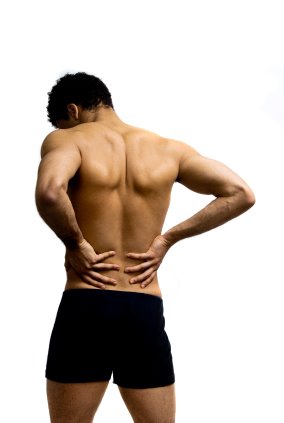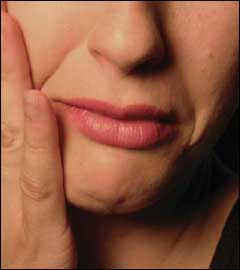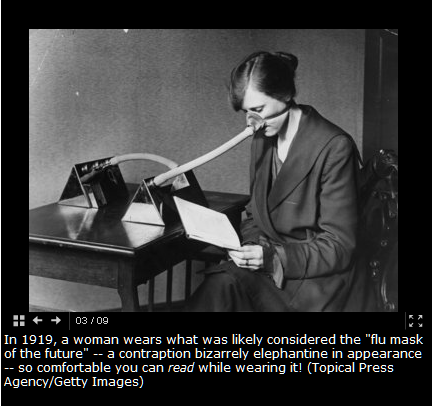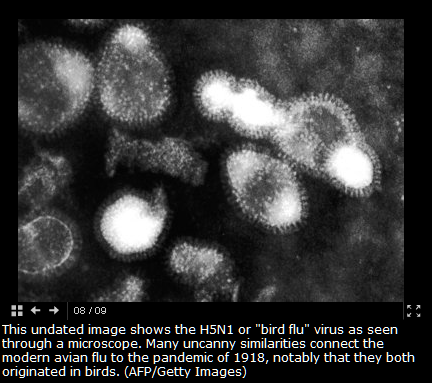Back Pain and Acupuncture
 Tuesday, July 7, 2009 at 10:51AM
Tuesday, July 7, 2009 at 10:51AM Treating back pain is a substantial part of my day at the clinic, constituting around 15% of a typical day's patient load. I realized that I had given short shrift to this topic when three back pain patients who read this blog regularly asked why so many of the topics covered by this site deal with internal medicine-related issues like fertility or immunity and not musculo-skeletal pain. The reason is simple, and perhaps wrong-headed of me: I have always presumed that most people already are aware of the dramatic effect that acupuncture can have on back pain and it's multiple causes but less knowledgeable about it's many other uses.

Back pain can have an astonishing number of origins, in broad brush these range from muscular to spinal with many types of pain originating from an interplay between both the muscles and the nerves exiting the spine.The most frequent types of back pain that we see in the clinic are from herniation, spinal stenosis and muscular impingement on spinal nerves. In clinic, the most rapid response to acupuncture therapy tend to be with muscular impingement; while spinal stenosis and herniation can require more gradual and focused treatment in order to begin to see favorable results. Very frequently, however, we can help our patients avoid more aggressive therapies such as surgery.
With an acute back spasm we can usually have the person feeling much better within 1-2 treatments, while with chronic back problem I usually tell patients that they will feel a measurable improvement with 3-4 treatments which will indicate that we are on the right track. From that point forward, we will continue to treat until the problem is gone and the clients returned to full functioning.
Research and Articles about Back Pain and Acupuncture
Pain expert Dr. Scott Fishman answers questions about back pain . Partially excerpted from DiscoveryHealth.com
Q: My doctor has recently suggested acupuncture. Is acupuncture safe and will it really help?
A: Acupuncture is one of the most time-tested treatments known to mankind. If the value of a treatment were based solely on how long it has been around, and how long people have thought that it was helpful, then acupuncture would probably be the most effective treatment known to humankind.
Typically, acupuncture is performed with a very thin needle that causes gentle sensations. It is usually not painful. Classically, acupuncture involves using a needle — although sometimes electricity is passed through the needle, and sometimes the burning of traditional Chinese herbs is employed as well. Burning these herbs is called "moxabustion."
The points that are used for the needle insertions often are at a distance from the actual area of symptoms. So, if someone has pain in their back, they may be getting needles in their feet, their ears or somewhere else distant from the actual site of the pain.
Taken all together, acupuncture is an ancient, time-tested form of therapy that seems to have exceptionally few side effects and appears to be safe for pain management. . . In my experience, many patients have found relief from pain through acupuncture. For those of my patients who have not found relief with standard medical therapies, I am always open-minded to any kind of treatment that will help, particularly those that have the fewest side effects. Thus, I embrace acupuncture. I look forward to revelations through science that better explain how it works and how it may be best applied to fight the war on pain.
Excerpted from the University of Maryland Medical Center:
STUDY ANALYSIS SHOWS ACUPUNCTURE EFFECTIVE FOR TREATING CHRONIC LOW BACK PAIN
With the acupuncture needles in place, the back pain patient rests for several minutes. The wires are part of the electrical stimulation used in the treatment. Most patients say the needles are painless and they find the treatment very relaxing.
Millions of people suffer with low back pain, and it is one of the top reasons people seek medical treatment. Back problems are also, by far, the primary reason for appointments with acupuncturists. But does acupuncture really help these patients? Researchers from the University of Maryland School of Medicine and the Peninsula Medical School, Plymouth, U.K., analyzed dozens of studies from around the world on acupuncture for low back pain.
“For people with chronic low back pain, this analysis shows that acupuncture is clearly effective in providing considerable pain relief,” says Eric Manheimer, study author and director of database and evaluation for the University of Maryland Center for Integrative Medicine. “The research also showed that acupuncture provided true pain relief. The benefit was not just due to the placebo effect.”
The reviewers scoured the medical literature for all studies involving acupuncture for treating low back pain. To minimize bias, the American and British teams developed explicit criteria for evaluating the studies and did the evaluations independently. Their analysis included only randomized controlled trials, the gold standard study design for evaluating medical procedures.
Thirty-three studies covering more than 2,100 patients met the criteria for review. In the end, the researchers used 22 of these studies for their analysis. All 22 evaluated Chinese-style acupuncture for chronic low back pain, defined as pain that has been on-going for more than three months. The other 11 studies were excluded because they either only reported data that could not be combined statistically, they only included patients with acute back pain or pregnancy-related back pain or they involved forms of acupuncture other than traditional Chinese acupuncture.
Manheimer says, “We wanted the studies for the analysis to meet the highest scientific standards. As a way to account for a possible placebo effect, we looked at many studies that used ‘sham acupuncture’ as a control group, where acupuncture needles were inserted only superficially or in the wrong place.”
The sham acupuncture studies were double-blinded, meaning neither the researchers nor the participants knew who was receiving the real or the sham treatment. When looking at those studies, the reviewers found the differences in pain ratings showed a significant difference between the real acupuncture and the sham acupuncture groups, indicating that the benefit was not just due to the placebo effect.
“From our analysis, the message for people with chronic low back pain is that acupuncture is a truly effective therapy that provides significant pain relief,” says Manheimer. “Patients with low back pain have many options for treatment including medication, chiropractic care, physical therapy and back exercises. However, these treatments do not always help, and scientific evidence indicates that they have only modest effectiveness.”
The researchers evaluated the effects of acupuncture both in the short-term (defined as three weeks after the last acupuncture treatment) as well as in the longer term. They found acupuncture provided definite pain relief in the short-term, and this relief appeared to be sustained over the longer term. However, they say it’s too early to be certain of longer term effects, and more studies are underway.
Previous attempts to synthesize information on acupuncture and chronic low back pain provided mixed results. But since 1999, the publication of five high quality, large-scale studies has added new evidence for the analysis. The current analysis includes these newer studies as well as earlier research not included in previous reviews.
In all, this analysis contains more than twice as many studies as earlier reviews and includes reports in English, Chinese, Japanese, Korean as well as Germanic and Romance languages. For this study, the reviewers received funding from the National Center for Complementary and Alternative Medicine, a part of the National Institutes of Health.


